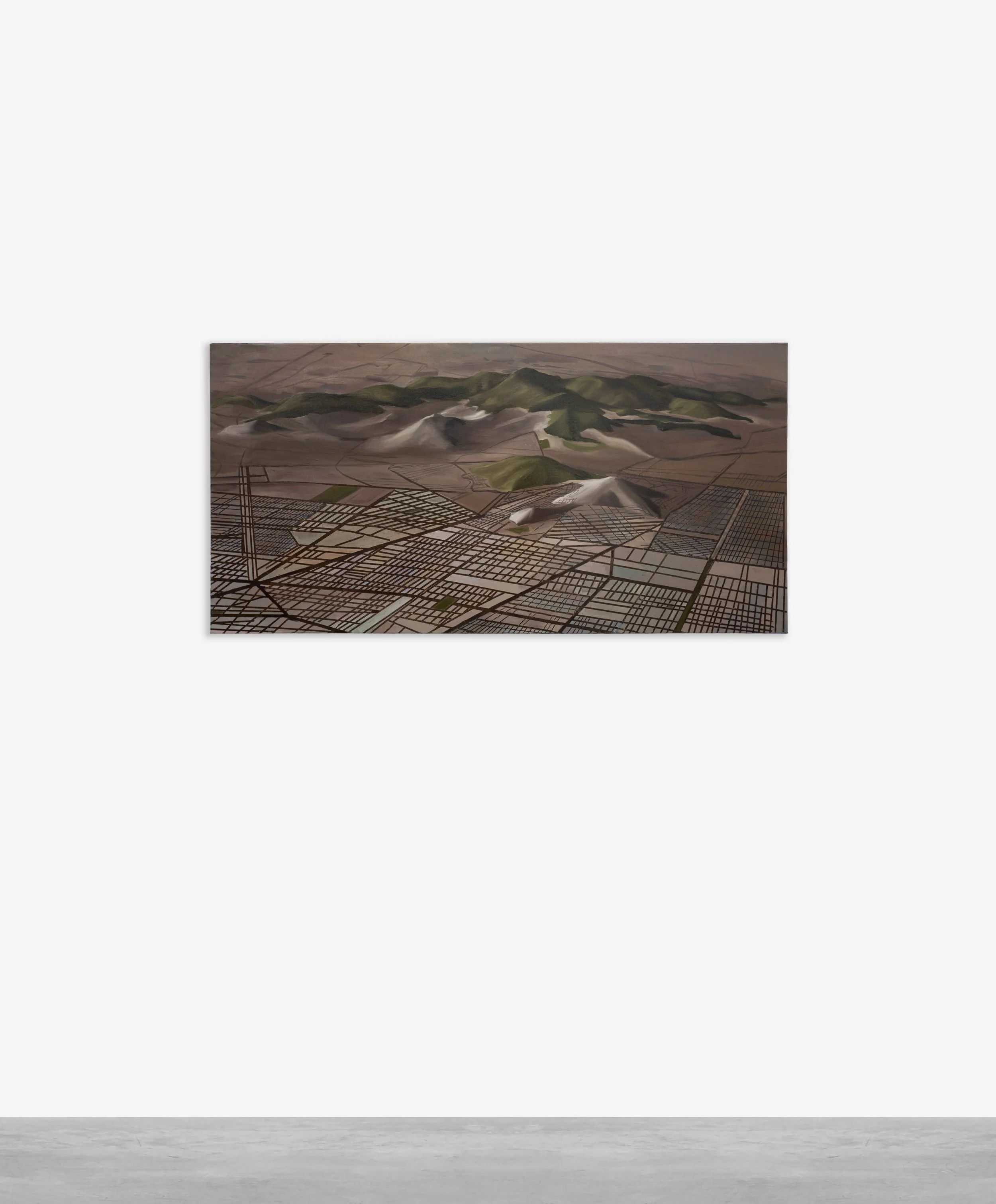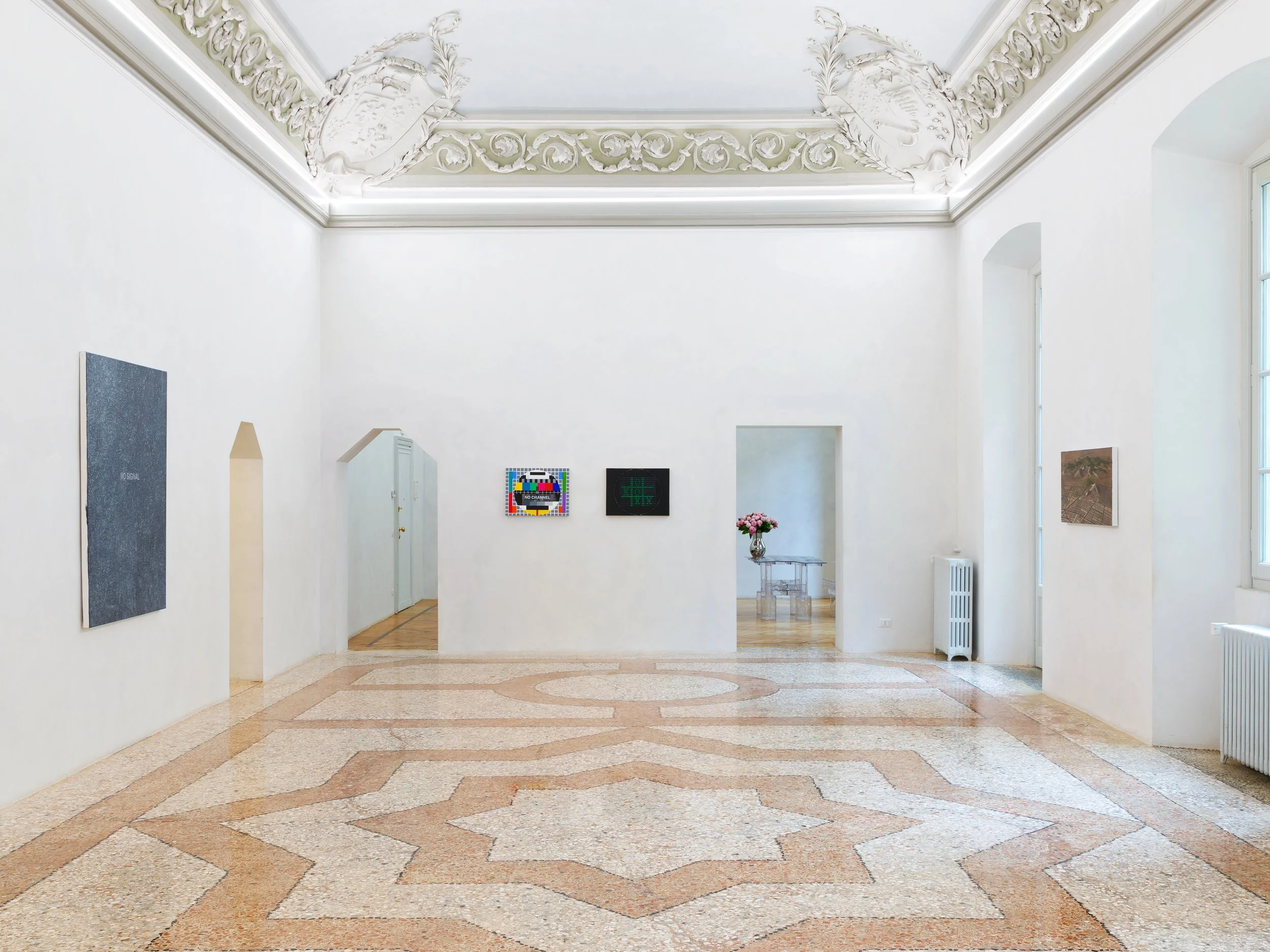Landscape, 2021
Landscape, 2021
Oil on linen
20 x 40 inches / 50.8 x 101.6 cm
Tan Mu has long been interested in how digital technology shapes contemporary landscapes and offers new perspectives. Landscape (2021) is based on a virtual landscape created using a 3D modeling program. This digital terrain was dismantled, analyzed, and used to design an urban residential complex. The grid-like structure in the painting represents the neighborhoods and roads planned for the future city, reflecting how technology predefines and constructs the blueprint for urban development. Through the deliberate process of traditional painting, Tan Mu reinterprets and reconstructs this digitally generated urban vision. Landscape is not only a response to the technological shaping of reality but also an exploration of the transformation between the virtual and the real, between rapid digital generation and handcrafted reproduction. The work highlights society’s reliance on digital technology while creating a dialogue between the calculated logic of digital tools and the emotional warmth of painting by hand.
Signal, May 5 – June 10, 2022, Peres Projects, Milan
Q: Your work Landscape (2021) depicts a virtual cityscape. Has your personal experience influenced your interest in urban landscapes?
Tan Mu: I have a particular fascination with depicting distant mountains and the shifting effects of light, such as the interplay of light and shadow over mountains at sunset or across a desert landscape. This visual memory stems from a trip I took to Mongolia years ago, where the vast desert plains and rolling hills left a profound impression on me. These scenes reminded me of the virtual landscapes in the games I played as a child, where the core mechanic was city design. In these games, players start with a blank terrain, adding natural elements like mountains and rivers before planning city centers, commercial districts, residential areas, and road networks. They also have to consider infrastructure like drainage, fire protection, and traffic management, with the ability to switch perspectives to observe how factors like congestion or natural disasters affect the city. This gaming experience sparked my deep interest in urban planning and the relationship between natural and human-made design. It also cultivated a systematic way of thinking about cities, influencing how I observe and interpret urban environments. These experiences have shaped my artistic practice, making me increasingly aware of how visual memories accumulate over time and influence creation. Initially, I wasn’t fully conscious of why I was drawn to these landscapes, but as I continued to create, I discovered the connections that had formed within my work.
Q: You mentioned that a "god’s-eye view" has influenced your work. Could you elaborate on that?
Tan Mu: Whether in gaming or aerial photography, the "god’s-eye view" closely resembles satellite imagery, allowing me to examine urban structures and layouts from a detached perspective. This viewpoint has become a recurring element in many of my works, such as Data Center, Solar Farm, Horizon, and my ongoing series on South American observatories. These works all adopt a similar panoramic gaze, exploring how humans intervene in nature through technology and attempt to find a balance between artificial design and natural environments. Through this detached, observational angle, I aim to capture the intricate relationships between cities, nature, and technology.
Q: How do you translate virtual landscapes into traditional painting?
Tan Mu: The source image for this piece is a virtual landscape generated using a 3D model. I deconstruct this virtual scene, analyzing it through the lens of digital methodologies before reconstructing it using traditional painting techniques. In the process, I employ oil painting methods and color relationships to depict a landscape that, while entirely virtual and non-existent, conveys a sculpted sense of realism through the simulation of light and materiality. The grid patterns in the composition represent the streets and zoning divisions of a virtual city. These rigid, linear grids contrast with the organic curves of natural terrain, symbolizing the tension between human design and the natural environment. While painting, I layer these grids so that the underlying colors subtly emerge through them, creating a complex visual effect. This layering not only enhances the depth of the painting but also hints at the historical accumulation and complexity inherent in urban development.




